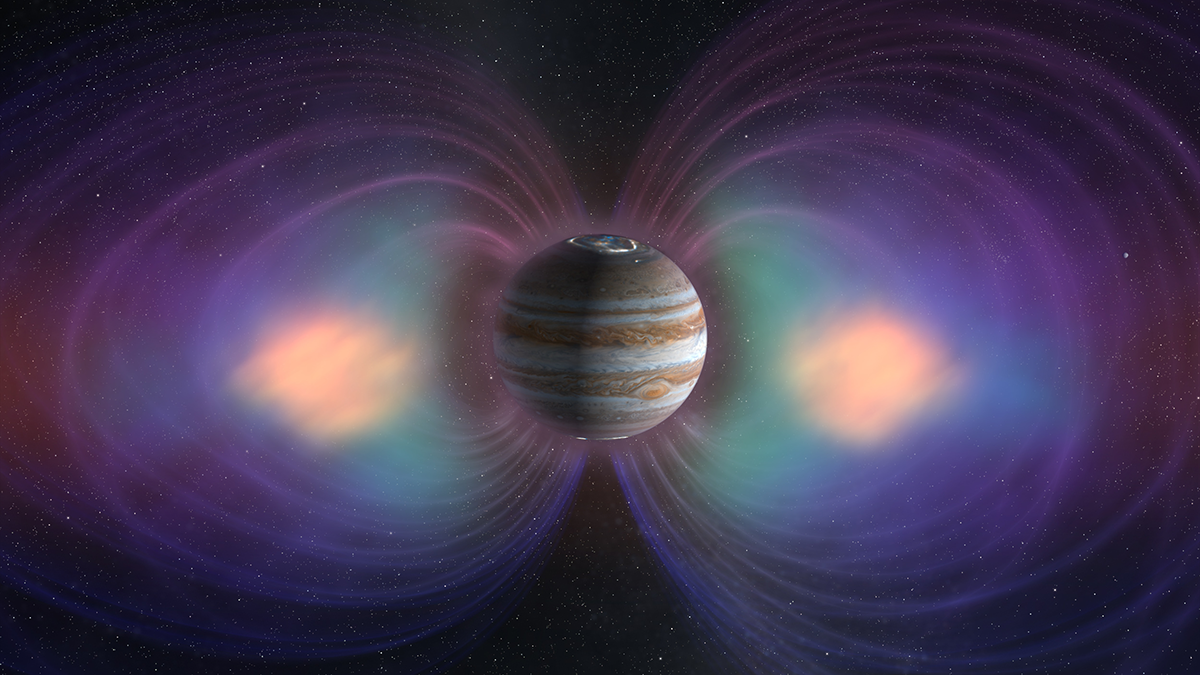Source: Journal of Geophysical Research: Planets
Spectacular aurorae dance and shimmer nearly continuously at Jupiter’s poles. These grand displays are driven by energetic particles that are funneled toward the poles within Jupiter’s vast magnetosphere, or the area of space affected by the planet’s magnetic field. These particles then stream down toward the Jovian surface, setting atmospheric molecules aglow. Jupiter’s aurorae occur mainly at ultraviolet wavelengths and are hundreds of times more energetic than Earth’s.
Sometimes, Jupiter’s aurorae grow much brighter for hours or days at a time. Potential causes may involve the solar wind’s influence on the magnetosphere or the dynamics of energetic particles spewed into space by Jupiter’s volcanic moon Io. However, clarifying the solar wind’s role in any one brightening event would require taking simultaneous measurements of Jupiter’s magnetosphere and aurorae and their relationship with the solar wind—a difficult undertaking.
Recently, NASA’s Juno mission has made such simultaneous measurements possible. Giles et al. used data collected by the Jupiter-orbiting spacecraft to study how the gas giant’s ultraviolet aurorae responded when its magnetosphere was temporarily but dramatically compressed to a smaller size on 6 and 7 December 2022. Compression events happen from time to time and are normal, but this one was stronger than almost any previously observed.
Data from two of Juno’s onboard instruments—the Jovian Auroral Distributions Experiment (JADE) and Waves—suggest that as Juno neared Jupiter in its elliptical orbit on 6 December, the spacecraft was overtaken by the outer edge of the shrinking magnetosphere before later reentering it closer to Jupiter.
Additional data from modeling efforts suggest that just as sometimes seen with Earth’s magnetosphere, the extreme compression was caused by a sudden intensification of the solar wind that exerted a powerful squeeze on Jupiter’s magnetosphere.
This squeeze coincided with a major spike in ultraviolet auroral emissions. Another of Juno’s instruments, its ultraviolet spectrograph, measured the aurora’s peak power at this time to be 12 terawatts—6 times its baseline power level.
Given the coincident timing of these rare events, the researchers concluded that the powerful auroral display was likely triggered by the major solar wind shock compressing the magnetosphere. Further research could clarify the mechanisms by which compression can boost the aurora and explore additional processes that could trigger brightening events. (Journal of Geophysical Research: Planets, https://doi.org/10.1029/2025JE009012, 2025)
—Sarah Stanley, Science Writer


